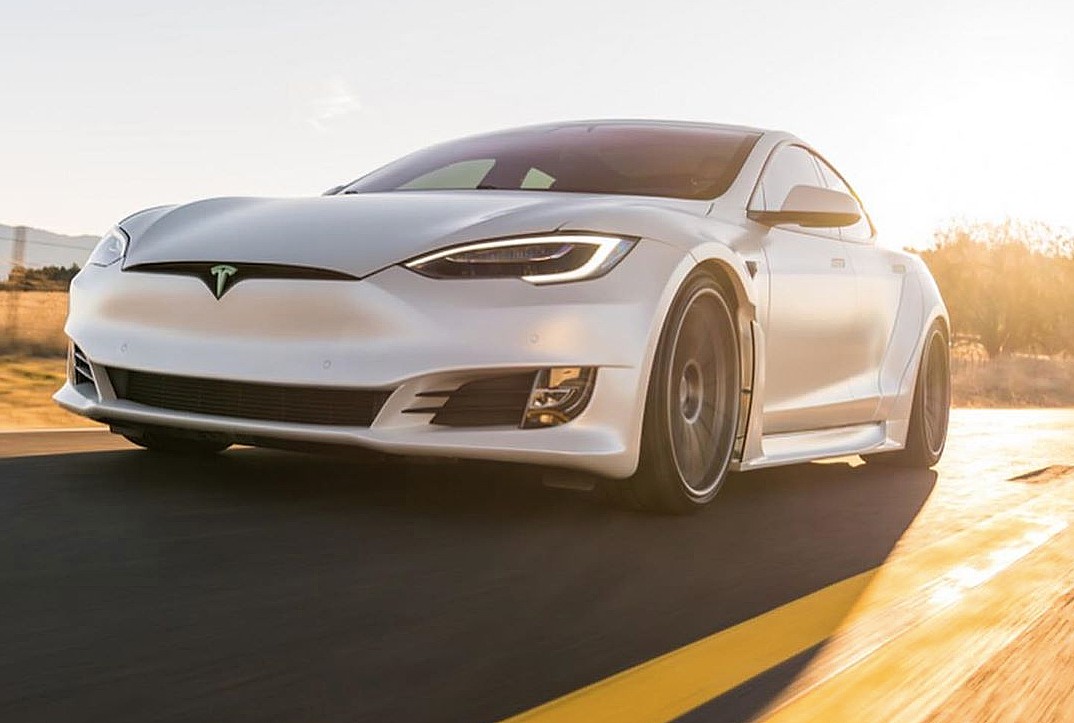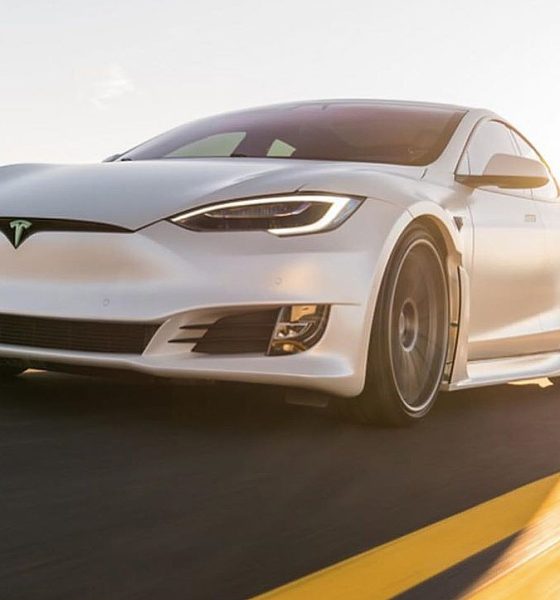

Investor's Corner
Tesla (TSLA) S&P exclusion: ‘Why the rush,’ Ex-Committee head says
Tesla’s (NASDAQ: TSLA) exclusion from the S&P 500 in September came as a shock to many shareholders and investors. However, a former Committee head for the index says that there is no rush, and Tesla’s hype will keep them in the conversation for possible inclusion in the future.
Ever since David Blitzer had retired from his post at the S&P, he had been enjoying a quiet life. However, when the S&P shockingly left Tesla out of its list of newly included companies in September, Blitzer’s phone started ringing off the hook.
“I’ve gotten calls from people who know I haven’t been on the committee for a year and a half and barely ever call me about stocks, and they say, why didn’t they do it?” Blitzer said in an interview with Bloomberg. “The amount of chatter about Tesla is staggering.”
But, Blitzer isn’t convinced that Tesla’s inclusion will never happen. He just believes that the some are waiting to see if the automaker’s recent rally on Wall Street is for real, or if the stock will backtrack in the coming months.
Tesla stock has grown over five-fold so far in 2020. It has made many investors richer, and many short-sellers poorer. Still, one thing is for certain, the stock’s valuation is not certain. This is where Blitzer believes the hold up is taking place.
“There’s plenty of times when there’s big names, popular names, well-known names that don’t get added the moment they’re eligible,” Blitzer said. The S&P’s goal was never to lump together the biggest companies. It was to construct “a great measure of the market,” he said.
But more so, Blitzer does not understand why so many people are so focused on getting Tesla into the S&P. “I think he real question is, why the rush?”
TSLA stock’s skyrocket in valuation this year has surged the company to be worth nearly $400 billion. The company’s performance on Wall Street, along with other tech heavyweights like Apple and Amazon, have helped the Nasdaq 100 gain 30% in value compared to the same day in 2019. The S&P has only gained 4% so far in 2020.
Tesla (TSLA) is leaving the current S&P 500 index’s performance in the dust
Blitzer says that Tesla’s exclusion is reminiscent of Microsoft’s leaving-out from the S&P from 1986 to 1994. Although Microsoft had a market cap of over $20 billion at the beginning of 1994, the S&P committee left the tech company outside of the index.
Blitzer says that he and his committee were given grief for the decision, but they decided to do it because Microsoft had owned more than half of its outstanding shares, and at least 50% must be floating for public investors to purchase.
“After the fact — they sold off some stock, we put in the index, everybody figured they’d forget — we still got complaints. So there have been other big ones, but I guess some of us learned to shrug and say, ‘we’ll wait ‘til next month,’” Blitzer said.
The Microsoft ordeal taught Blitzer that patience is the way to handle the inclusion of some companies where their future is uncertain. While Tesla’s run in 2020 is impressive, he states that there just needs to be more time to figure out if the run is for real.
Disclaimer: Joey Klender is a TSLA Shareholder.

Investor's Corner
Tesla stock closes at all-time high on heels of Robotaxi progress

Tesla stock (NASDAQ: TSLA) closed at an all-time high on Tuesday, jumping over 3 percent during the day and finishing at $489.88.
The price beats the previous record close, which was $479.86.
Shares have had a crazy year, dipping more than 40 percent from the start of the year. The stock then started to recover once again around late April, when its price started to climb back up from the low $200 level.
This week, Tesla started to climb toward its highest levels ever, as it was revealed on Sunday that the company was testing driverless Robotaxis in Austin. The spike in value pushed the company’s valuation to $1.63 trillion.
Tesla Robotaxi goes driverless as Musk confirms Safety Monitor removal testing
It is the seventh-most valuable company on the market currently, trailing Nvidia, Apple, Alphabet (Google), Microsoft, Amazon, and Meta.
Shares closed up $14.57 today, up over 3 percent.
The stock has gone through a lot this year, as previously mentioned. Shares tumbled in Q1 due to CEO Elon Musk’s involvement with the Department of Government Efficiency (DOGE), which pulled his attention away from his companies and left a major overhang on their valuations.
However, things started to rebound halfway through the year, and as the government started to phase out the $7,500 tax credit, demand spiked as consumers tried to take advantage of it.
Q3 deliveries were the highest in company history, and Tesla responded to the loss of the tax credit with the launch of the Model 3 and Model Y Standard.
Additionally, analysts have announced high expectations this week for the company on Wall Street as Robotaxi continues to be the focus. With autonomy within Tesla’s sights, things are moving in the direction of Robotaxi being a major catalyst for growth on the Street in the coming year.
Elon Musk
Tesla needs to come through on this one Robotaxi metric, analyst says
“We think the key focus from here will be how fast Tesla can scale driverless operations (including if Tesla’s approach to software/hardware allows it to scale significantly faster than competitors, as the company has argued), and on profitability.”

Tesla needs to come through on this one Robotaxi metric, Mark Delaney of Goldman Sachs says.
Tesla is in the process of rolling out its Robotaxi platform to areas outside of Austin and the California Bay Area. It has plans to launch in five additional cities, including Houston, Dallas, Miami, Las Vegas, and Phoenix.
However, the company’s expansion is not what the focus needs to be, according to Delaney. It’s the speed of deployment.
The analyst said:
“We think the key focus from here will be how fast Tesla can scale driverless operations (including if Tesla’s approach to software/hardware allows it to scale significantly faster than competitors, as the company has argued), and on profitability.”
Profitability will come as the Robotaxi fleet expands. Making that money will be dependent on when Tesla can initiate rides in more areas, giving more customers access to the program.
There are some additional things that the company needs to make happen ahead of the major Robotaxi expansion, one of those things is launching driverless rides in Austin, the first city in which it launched the program.
This week, Tesla started testing driverless Robotaxi rides in Austin, as two different Model Y units were spotted with no occupants, a huge step in the company’s plans for the ride-sharing platform.
Tesla Robotaxi goes driverless as Musk confirms Safety Monitor removal testing
CEO Elon Musk has been hoping to remove Safety Monitors from Robotaxis in Austin for several months, first mentioning the plan to have them out by the end of 2025 in September. He confirmed on Sunday that Tesla had officially removed vehicle occupants and started testing truly unsupervised rides.
Although Safety Monitors in Austin have been sitting in the passenger’s seat, they have still had the ability to override things in case of an emergency. After all, the ultimate goal was safety and avoiding any accidents or injuries.
Goldman Sachs reiterated its ‘Neutral’ rating and its $400 price target. Delaney said, “Tesla is making progress with its autonomous technology,” and recent developments make it evident that this is true.
Investor's Corner
Tesla gets bold Robotaxi prediction from Wall Street firm
Last week, Andrew Percoco took over Tesla analysis for Morgan Stanley from Adam Jonas, who covered the stock for years. Percoco seems to be less optimistic and bullish on Tesla shares, while still being fair and balanced in his analysis.

Tesla (NASDAQ: TSLA) received a bold Robotaxi prediction from Morgan Stanley, which anticipates a dramatic increase in the size of the company’s autonomous ride-hailing suite in the coming years.
Last week, Andrew Percoco took over Tesla analysis for Morgan Stanley from Adam Jonas, who covered the stock for years. Percoco seems to be less optimistic and bullish on Tesla shares, while still being fair and balanced in his analysis.
Percoco dug into the Robotaxi fleet and its expansion in the coming years in his latest note, released on Tuesday. The firm expects Tesla to increase the Robotaxi fleet size to 1,000 vehicles in 2026. However, that’s small-scale compared to what they expect from Tesla in a decade.
Tesla expands Robotaxi app access once again, this time on a global scale
By 2035, Morgan Stanley believes there will be one million Robotaxis on the road across multiple cities, a major jump and a considerable fleet size. We assume this means the fleet of vehicles Tesla will operate internally, and not including passenger-owned vehicles that could be added through software updates.
He also listed three specific catalysts that investors should pay attention to, as these will represent the company being on track to achieve its Robotaxi dreams:
- Opening Robotaxi to the public without a Safety Monitor. Timing is unclear, but it appears that Tesla is getting closer by the day.
- Improvement in safety metrics without the Safety Monitor. Tesla’s ability to improve its safety metrics as it scales miles driven without the Safety Monitor is imperative as it looks to scale in new states and cities in 2026.
- Cybercab start of production, targeted for April 2026. Tesla’s Cybercab is a purpose-built vehicle (no steering wheel or pedals, only two seats) that is expected to be produced through its state-of-the-art unboxed manufacturing process, offering further cost reductions and thus accelerating adoption over time.
Robotaxi stands to be one of Tesla’s most significant revenue contributors, especially as the company plans to continue expanding its ride-hailing service across the world in the coming years.
Its current deployment strategy is controlled and conservative to avoid any drastic and potentially program-ruining incidents.
So far, the program, which is active in Austin and the California Bay Area, has been widely successful.








